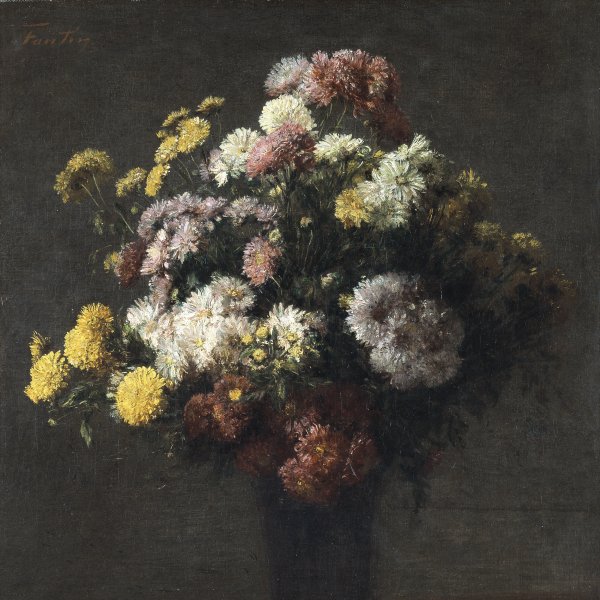Henri Fantin-Latour
Grenoble, 1836-Orne, 1904
A contemporary of the Impressionists, the French artist Henri Fantin-Latour was notable for his flower paintings and group portraits of the Paris intellectuals of the period. The son of Théodore Fantin-Latour, also an artist, who initiated him in the art of painting, he studied at the École de Dessin in Paris. However, he derived his real training from copying the classical works of the Great Masters in the Musée du Louvre, particularly Titian and Veronese. Later, in 1861, he was a disciple of Gustave Courbet for a while, although his discreet, intimate realism was very different from that of his master and caused them to go their separate ways very soon.
In 1855 Fantin-Latour met James Whistler, with whom he made his first trip to Britain. There he found the best clientele for his still lifes and flower paintings, which attained extraordinary fame on account of their realism, which was comparable to that of seventeenth-century Dutch painting. Fantin-Latour’s works were shown regularly at the Salon from 1861 onwards. He exhibited at the Salon des Refusés in 1863 and took part in the tribute to Eugène Delacroix in 1864. However, despite his friendship with Édouard Manet, he rejected the invitation to participate in the Impressionists’ first exhibition in 1874.
In the 1870s his work shifted towards more literary themes that connected him with Symbolism. In parallel with this development, his works reflected his discovery of the German contemporary music of Robert Schumann, Johannes Brahms and Richard Wagner, which also provided him with a source of inspiration. In 1904 he died in Orne, where he had spent summers with his wife since the 1870s.
In 1855 Fantin-Latour met James Whistler, with whom he made his first trip to Britain. There he found the best clientele for his still lifes and flower paintings, which attained extraordinary fame on account of their realism, which was comparable to that of seventeenth-century Dutch painting. Fantin-Latour’s works were shown regularly at the Salon from 1861 onwards. He exhibited at the Salon des Refusés in 1863 and took part in the tribute to Eugène Delacroix in 1864. However, despite his friendship with Édouard Manet, he rejected the invitation to participate in the Impressionists’ first exhibition in 1874.
In the 1870s his work shifted towards more literary themes that connected him with Symbolism. In parallel with this development, his works reflected his discovery of the German contemporary music of Robert Schumann, Johannes Brahms and Richard Wagner, which also provided him with a source of inspiration. In 1904 he died in Orne, where he had spent summers with his wife since the 1870s.

